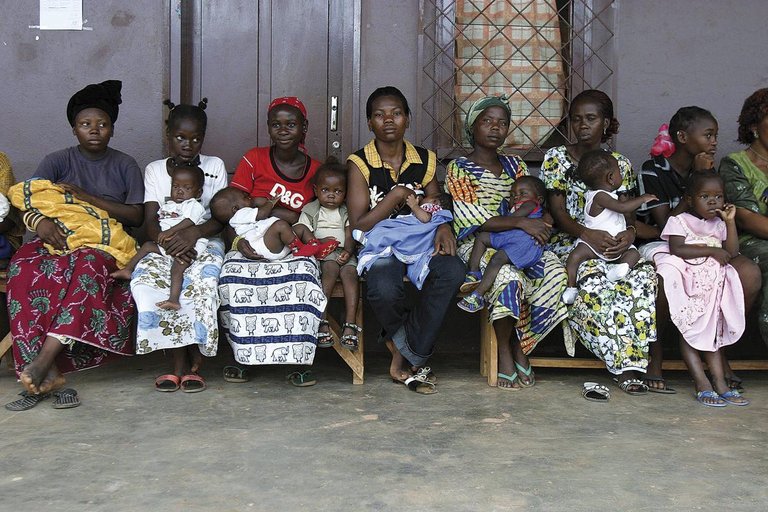Is the HIV vaccine absolutely necessary?

In June 1981, the first cases of what would later be called Acquired Immunodeficiency Syndrome (AIDS) were described and thereafter the disease was extended. In 1984, after confirming that the Human Immunodeficiency Virus (HIV) isolated the previous year was the cause of AIDS, an effective vaccine was thought to be developed quickly. At that time, however, no one knew that getting the HIV vaccine would be much more complex than getting successful vaccines against other viruses. Currently, most viral vaccines are based on attenuated and inactive viruses, but both options were ruled out as dangerous. Thus, following the hepatitis B vaccine model, the scientific community opted for vaccines based on HIV surface glycoprotein. Unfortunately, after 30 years, we do not have HIV vaccines.
In the last decade, however, great advances have been made in the control of the disease. The 2013 report of the Joint United Nations Programme on AIDS (UNAIDS) reveals that deaths from AIDS and new infections have decreased by one-third over peak values. These improvements have been derived from the implementation of prevention and treatment programs, mainly by antiretroviral drugs. Antiretroviral drugs, in addition to avoiding the development and death of the disease, can reduce the transmission of the virus to 96%. In low- and middle-income countries, people receiving retrovirals went from 300,000 people in 2002 to 9.7 million in 2012.
On the other hand, preventive methods have also had positive effects, such as voluntary circumcisions of men, which can reduce the transmission of the virus by 60%, and the prevention of the transmission of the mother virus to their children, which has prevented 670,000 children from trapping the virus between 2009 and 2012. The goal of UNAIDS is to expand these measures to maximize new virus infections. So, do we need an effective vaccine to remove this serious pandemic?
The answer is affirmative. Although anti-virus methods are becoming increasingly available, in 2012 35.3 million people lived with HIV-1, 70% in sub-Saharan Africa. Each day there were 6,300 new infections, 95% in low- and middle-income countries, highlighting the difficulties of low-income countries. In fact, despite the advances experienced, only 34% of potential receptors receive antiretroviral drugs. In the fight against HIV, the poorest countries are still in the hands of international aid. However, the small resources of a people are not the only obstacle. The transmission of the virus also occurs in developed economies, although they have access to much information and resources. The responsibility for the adoption of measures is, above all, a consequence of one's own nature, that is, that prevention depends on one's own healthy choices. In Spain, the number of new infected people barely decreases year after year. In 2012, 3,210 new infections were reported, 161 in the Basque Country. In addition, the fact that an individual does not know that he is a carrier is a huge problem, since these infected, about 45,000 in Spain, are accused most of the virus transmission.
All this shows us that in a context without vaccines there are many barriers to eradicating the virus. Maintaining the current trend of HIV/AIDS, a hypothetical vaccine implanted in 2020, although partially effective, can have a high incidence in low and medium income countries. In fact, the Anti-Aids Vaccine Development Initiative (IAVI) has estimated that between 5.2 and 10.7 million new HIV could prevent infections. This would also mean a saving of 46-95 billion dollars in antiretroviral drugs. On the other hand, a vaccine would allow those who do not have a stable infrastructure of health surveillance to receive a treatment at one or a few doses, avoiding not only the infection, but also the costly treatment of antiretroviral drugs for life. In low- and middle-income countries, the availability of antiretroviral drugs is much more complex than the lack of money. The social stigma of HIV-Positive people causes many of them to refuse to go to the clinics to look for medicines. In addition, the malnutrition suffered by some villages reduces the effectiveness of antiretroviral drugs.
Therefore, we should bet on an HIV vaccine. Since the discovery of the virus, the knowledge acquired about the virus and the functioning of the immune system can lead to new vaccine design strategies. We know that during the first three years of infection, between 20 and 30% of infected people develop the ability to neutralize the different strains of the virus. Unfortunately, when antibodies responsible for this capacity are produced, the latent deposit of the virus is already established. Therefore, intense efforts are being made to clarify how and under what conditions these neutralizing antibodies are produced. The number of known neutralizing antibodies in recent years has increased. Antibodies show areas vulnerable to the virus and, by studying its characteristics, the components that a vaccine needs to produce antibodies can be determined. In addition, it has been announced that the RV-144 vaccination test carried out in Thailand has obtained successful results, reaching a minimum efficiency of 31%. Research into these protective immune responses can also contribute to the fight against the virus.
Although the trend of recent years has been to reduce the funding of vaccination research, the scientific community has fostered collaboration to improve the efficiency of the use of collective knowledge and research infrastructures, through the creation of multidisciplinary teams. In any case, until an effective vaccine is available, prevention methods for effective control of the pandemic should be promoted and disseminated. It is especially important that neither society nor funders think that we are about to defeat the virus, since this can cause harmful effects, since there would be a risk of taking less measures.
Buletina
Bidali zure helbide elektronikoa eta jaso asteroko buletina zure sarrera-ontzian











